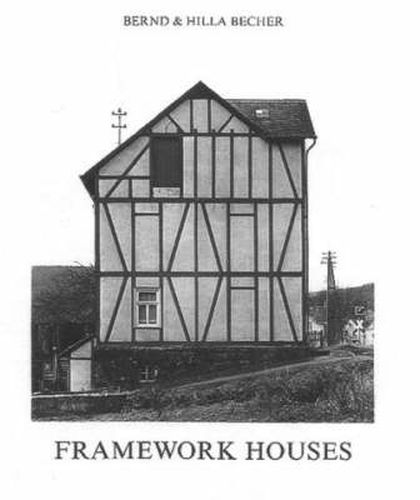Readings Newsletter
Become a Readings Member to make your shopping experience even easier.
Sign in or sign up for free!
You’re not far away from qualifying for FREE standard shipping within Australia
You’ve qualified for FREE standard shipping within Australia
The cart is loading…






Bernd and Hilla Becher have profoundly influenced the international photography world over the past several decades. Their genre, which falls somewhere between topological documentation and conceptual art, is in line with the aesthetics of such early-20th-century masters of German photography as Karl Blossfeldt, Germaine Krull, Albert Renger-Patzsch, and August Sander. This work was originally published in Germany in 1977 and quickly went out of print. This new edition of that classic work takes advantage of reproduction and printing technologies not available in 1977. Most of the houses in the book were built between 1870 and 1914 in the Siegen region of Germany, one of the oldest iron-producing areas of Europe. The houses were built by immigrants who came to work in the mines or blast furnace plants. In 1790 a law was enacted to save wood for iron production by preventing its excessive use for house-building. The law prescribed the amount of lumber structurally required and forbade the construction of elements serving only ornamental purposes. It also specified the maximum strength for beams, sills, cornerposts, and studs. A functional framework, combined with neoclassical proportions, determined the new type of house; it was also applied to other buildings such as barns, churches, schools, inns, shops, factories, and mine structures.
$9.00 standard shipping within Australia
FREE standard shipping within Australia for orders over $100.00
Express & International shipping calculated at checkout
Bernd and Hilla Becher have profoundly influenced the international photography world over the past several decades. Their genre, which falls somewhere between topological documentation and conceptual art, is in line with the aesthetics of such early-20th-century masters of German photography as Karl Blossfeldt, Germaine Krull, Albert Renger-Patzsch, and August Sander. This work was originally published in Germany in 1977 and quickly went out of print. This new edition of that classic work takes advantage of reproduction and printing technologies not available in 1977. Most of the houses in the book were built between 1870 and 1914 in the Siegen region of Germany, one of the oldest iron-producing areas of Europe. The houses were built by immigrants who came to work in the mines or blast furnace plants. In 1790 a law was enacted to save wood for iron production by preventing its excessive use for house-building. The law prescribed the amount of lumber structurally required and forbade the construction of elements serving only ornamental purposes. It also specified the maximum strength for beams, sills, cornerposts, and studs. A functional framework, combined with neoclassical proportions, determined the new type of house; it was also applied to other buildings such as barns, churches, schools, inns, shops, factories, and mine structures.